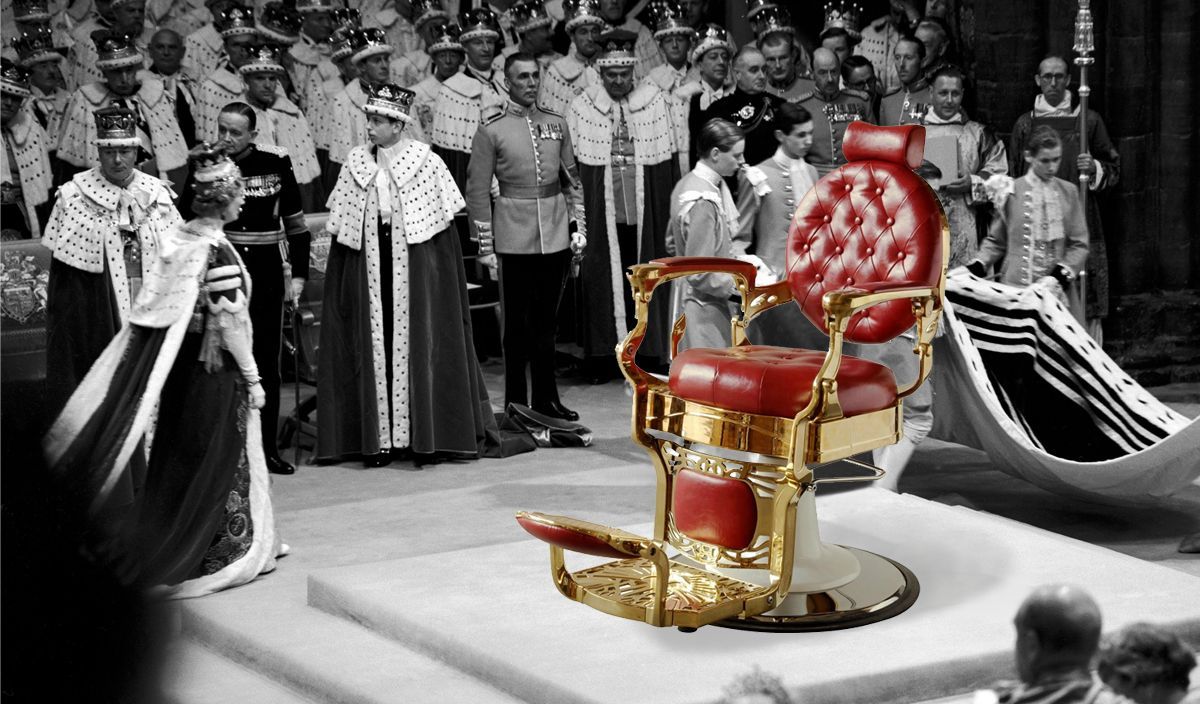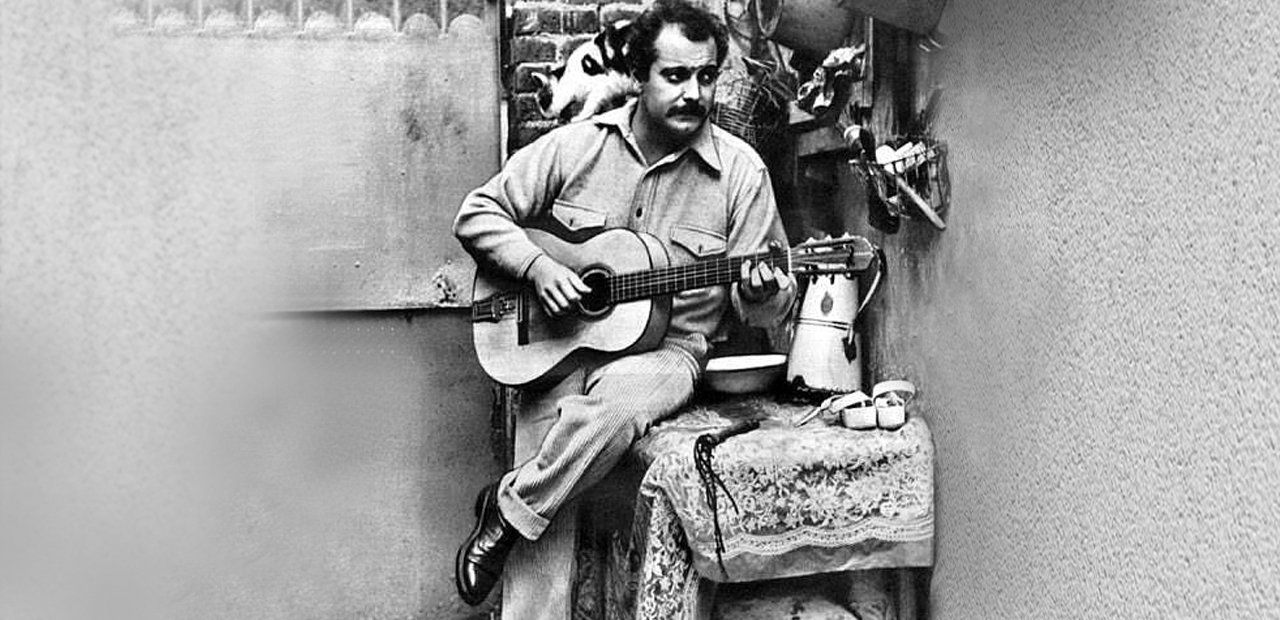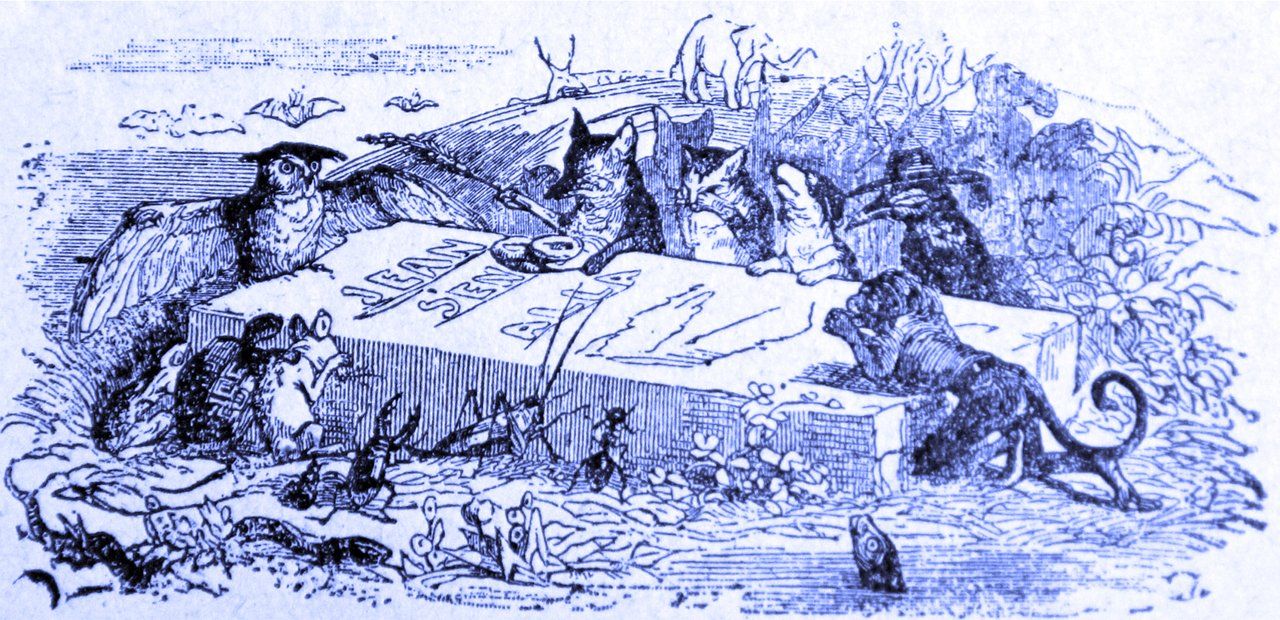Audasud Blog and Cultural Bulletin

In the bosom of the smalah Windsor , there is a thousand-year-old custom among others: adorning the new sovereign with a headdress and a dazzling smile. An embellishment only authorized by the right of primogeniture. Of a metal much more durable than the longest reign, the gold crowns resist the chewing, the grinding of the teeth during tabloid readings and the strong bites that these generate. They are ideal for monarchs who suffer from hair or tooth loss. Because they divert, for the former, planetary attention, and add, for the latter, an ironic touch when it comes to castigating the toothless. The coronation being a festive operation, it cannot, for the English patient stamping in the waiting room, take place in a period of mourning, which generally extends for a year, after the death of the last garlanded. Camilla will have a diamond crown that we imagine will have the most beautiful effect, when the spotlights and the flashes will illuminate a blissful smile. Her prosthesis was removed from the display case of her predecessor, Queen Mary , wife of King George v , for reinsertion operated for the sake of durability. A first for a queen consort since the 18 th century, when King George ii ’s legitimate, Caroline , wore the crown—and, according to a tabloid rumor, the garters—of Mary of Modena . A statement from Buckingham Palace announced last February that Queen Mary ’s crown had left the Tower of London to undergo some modifications by a prosthetist holding a royal warrant from the Crown. Breaking with his predecessors, Charly of Buckingham wanted to blow a wind of modernity, and strip his coronation of “obscure and time-consuming rituals”. The civil list of the operation only mentions 2,000 witnesses, versus some 8,000 who previously were chomping at the bit when they heard the milling machine pierce the thick atmosphere of Westminster Abbey, between two chanted hymns. The dress-code will also be stripped of all ostentatious frills. False pearls will remain banned. A smooth lifting will extend to the anointing, with a 100 % vegetable oil, without ingredients of vassal or animal origin, a quasi casus belli of Charles , converted from British racing green to eco green even before his birth. The Holy Chrism was made from olives harvested from two olive groves in a monastery on the Mount of Olives where Alice of Greece , grandmother of Charles iii , rests. The extract from the pressing of the olives was perfumed, according to an ancestral formula, with essential oils—sesame, rose, jasmine, cinnamon, neroli, benzoin, amber and orange blossom—then blessed in the Church of the Holy Sepulcher, in Jerusalem, during half a dozen ceremonies. An oil therefore multicultural, secular and vegan according to the label printed with an ink no less blessed. The holiest rite of the coronation ceremony will see the monarch’s hands, head and chest oiled as the body of a Turkish wrestler before the embrace. A session close to those offered to Prince Andrew on a sulphurous island. The queen consort will be anointed with what remains of the olive oil. Let’s hope it will happen behind a screen. To crown it all, would the cult of a monarch by divine right be more honorable than that of an autocrat by dictatorial right when the sovereign would become amiable by dint of renunciations and dusting off? To finish beating his guilt, the sovereign-defender of all faiths will owe allegiance to God, under penalty of losing his legitimacy. Hence his pious loyalty to the sacrosanct order of the Church mouse and to that of the Holy Joe. Honi soit qui mal y pense.

Halloween has been our favorite holiday since time immemorial. This fall, we are passing our turn. Unsavory bugs will stay in their boxes in the attic where, after all, they are most at home. Ditto for the stark decorum of macabre accessories and pots smelling of evil potion, which the Adams family would not have denied, who shamelessly declined, year after year, our Gothic invitation. A vigil between skeletons where one prides oneself on being scared no longer really takes place when an ever more terrifying daily life does the job. And it does it splendidly. The world is pretty awful. Newspapers are pretty awful. The horror is real enough to add a festive touch. Occasional cruelty, random violence haunts our souls and gnaws our hope for better days a little more each day. A wild climate has set in. To see it scroll on our screens, no need to introduce a coin in the droppings. In memory from beyond the grave, we have never been so close to the precipice. It is not a pagan festival that will restore the church to the center of a barbarian village. It remains to live apart. Don't ask me where Apart is, I don't know. To the sad spirits, we will certainly retort that all is not gloomy. And the resilience is such that one can have dark thoughts until the advanced age of 102 years as Pierre Soulages. But if you think the news is monstrous enough, wait. Halloween has just begun. See you all on the dark side of the Moon…

Elizabeth II is now that peaceful incarnation. The proof that a young woman without any experience or diploma can, by chance alone, climb the steps of power four by four and break, however high, the baccarat ceiling. For the noble purpose of recovering her prize in the primogeniture lottery. In the ruthless world of public appearances, she knew how to master the codes, if not dress codes — her acidulous wardrobe attracting arrogant jeers to her — at least those of a cuckoo clock when it came to slipping metronomically into the balcony and wave her arm before returning to have the mechanism oiled. Some whisper in the embrasures of the imposing windows to have seen her surprise her slippers elsewhere than in their place designated by an equally oiled protocol. Which inevitably made her grand chamberlain fly off the handle, go into a spin to enter into an anger stifled only by the immensity of a damp palace with tired furniture, open to all drafts and opprobrium. Coming from a line more accustomed to shortening heads, impaling remains or more recently decimating battalions of pachyderms, Elizabeth enjoyed only the company of her last corgis and her barrack-room humorist whom she married for, on the spot… relegate him two steps behind her. As a little girl, she dreamed of being an actress. Ironically, her wish was granted. Elizabeth ii’ s first role will be unchanging, uniform and relentless, regardless of setting or partners. The ceremonial role of a constitutional monarch whose scenario did not provide the shadow of a piece of an executive power. The end of her career was, however, an opportunity to prove her talents as a stuntwoman. Aren't the royal dynasties the last great silent film stars? In the days of the United Kingdom of Great Britain and Ireland, her ancestors were more talkative, their courts more cruel and their legions bloodthirsty. But we must do them justice: to go and slay a few Frenchmen across the Channel at the end of the week, they did not incur any debts and paid all their suppliers in cash, by means indeed of booty and ransoms with which they overwhelmed the surrounding peoples. Nowadays, to admire such brilliant epics, you have to subscribe to Netflix. The monarchs of that time had their swords on edge and washed their hands regularly twice a month. They often died as a result of their first bath and pushed the luxury so far as to use pocket handkerchiefs. The upheavals of history subsequently forced them to make some adjustments, among other things fiscal, with this so British phlegm that makes them show politeness and delicacy at the slightest disaster, at the slightest disgrace. So in 1992 , this royal continuum was put to the test. The couple from Wales are tearing themselves apart in the pages of bestsellers. The London tabloids make their headlines and trumpet their separation. A fire broke out in November at Windsor Castle, fueled by piles of filthy books and newspapers bought by the family. Annus Horribilis according to the queen because the same year Prince Andrew and Princess Anne separated from their halves. Panicked follicles should not be long to start harassing Prince Edward , Elizabeth ’s fourth and last child. They will have to wait until 1996 and the divorce of Charles and Diana turns to tragedy the following year with the death in Paris of the Princess of hearts . As the crowd pays homage to her in front of Buckingham Palace, we easily suspect Prince Philip yelling, exasperated by his family: “Which of you, bunch of wimps, will go and pay homage to her?” At these electrifying words, the queen and her children, as one man… would have maintained the deepest silence. Seeing the gates of the palace come to life dangerously, Elizabeth had her grand chamberlain apply some poultices which were sorely needed. After an appropriate “Thank you, my grand” she had the drawbridge lowered, half-moved by curiosity for an indulgent condolence card among the flowers. The last Windsorian earthquakes would again concern Andrew and her favourite, Harry . The first, for a debauchery after all quite shared, but with a sulphurous host in the company of a very young blonde who became frightened once becoming an adult. The second confessed quite soon a penchant for girls smelling of grease and the hops between nazi-like buddies. Granny , whom these wanderings displeased, excommunicated him. Which had no more effect on her grandson than if someone had come to tell him that his fish and chips had been served. Another bumpy year, she sighed, waving to the crowd from an increasingly bare balcony. In an empire on which the sky never clears, Elizabeth still found the strength to go around, followed by fifteen thousand dozen kilos of luggage in which sat a little chamberlain. Thus in 2011 she offered herself a trip to Ireland, the first of a British monarch in a century, to put an end to a quarrel of religion or for a question of party wall. We never really knew. Multiplying clothing symbols, her only free expression, she imagined with the help of an Irish dressmaker a most piercing bundle: a dress decorated with 2,091 hand-sewn shamrocks, hats with green feathers, an Irish harp brooch, maids of honour in 50 shades of green. A tailor-made empathy that she would have been well advised later to show at the death of a princess mentioned above. The queen spoke a convolution in perfect Gaelic, regretting the way Britain had made Ireland suffer, but forgetting that the Tommies had made this dialect all but disappear. Eight small centuries of bloodshed and hatred, ravaged by sinister famines, pockmarked by a Bloody Sunday when in 1972 British forces killed 14 innocent civilians. And punctuated by the astounding attack in 1979 in which her cousin Lord Mountbatten and his 14 -year-old grandson died. While former i.r.a. in power today would have preferred to wait another century, by the time the visit was over, the Irish had melted. They called Elizabeth their prodigal mother , Liz , and some even waved Union Jacks. As time went on and victimization became a trend, the latest avatar of nepotism and colonialism unchained a creeping admiration for her stoicism, as isolated as she was from her people as the dean of beasts from visitors in a wildlife park. Elizabeth retired to Balmoral, her summer retreat, where her health rapidly deteriorated. She leaves unfinished a Yorkshire pudding and an heir whose ears have been ready for ages to make him take off from the family cocoon. The queen dies at the age of 96 from the fear of not entering the Guinness record of the longest reign. She showed no regrets after her death.

THIS DAY MARKS THE BICENTENARY of the birth of Ulysses S. Grant , American General and Statesman, born Hiram Ulysse Grant on April 27 , 1822 in Point Pleasant, Ohio. The eldest of 3 sons and 3 daughters, he was raised in a poor family, forced to separate and work from an early age. His p arents, Jesse Root Grant and Hanna Simpson , raised Methodists — American style — refrained from playing cards or dancing and did not allow their children to boogie or swear.

A for archaism… or anachronism… Georges Brassens savored “ words that mean something ”. He added: “ Today, we are in the midst of confusion and the inflation of language ”. Nostalgic for an art of the verb, new terminologies made him exclaim: “ I hate new words! ” In his texts, the poet draws from multiple sources of language: old French, classical language, ancient and contemporary slang. He makes them cohabit, telescope and merge in a colorful jargon, a syntax of which he is the exclusive linguist. The following pages list some singular terms in a love dictionary: terms representative of his thought, improbable phrases, allegorical and mythological invocations, an illustrated primer of the Brassens dialect.. The author of The Pornographe (1958) wrote in this song: Aujourd’hui que mon gagne-pain C’est d’parler comme unturlupin, Je n’pense plus « merde », pardi ! Mais je le dis. In the Middle Ages, Turlupin was the name given to members of a community that spread through France, Germany and the Netherlands, self-proclaimed brothers and sisters of the free spirit. Their rebellion against the established church and their ways of life (nudity, free love, opposition to established ecclesiastical powers) advocated an ideal of poverty. According to this doctrine of the Free Spirit, it is by freeing oneself from all obstacles and from the superfluous that one could know bliss from earthly life. A spiritual licentiousness where charity merges with carnal love, and which was consumed without restriction within the brotherhood. A few centuries later, the word turlupin has evolved and no longer concerns anyone whose writings or words are of dubious, grotesque taste. But in our Sète poet, we find this old form of free spirit carried over the shoulder. And his livelihood, which he offers us as an inheritance, lights us up like a lightship. The jabs, which he unleashes in bursts, well deserved a glossary, an arsenal of benevolent glosses. And to clarify a turn or an obscure image, a few comments highlighted, mirroring the excerpts of songs from which they come, rather than exiled, repressed at the end of the book. Song was the very first form of poetry and literature. The Iliad and the Odyssey, dear to the prank of the song, are moreover divided into songs and not into chapters. Thus, poetry is born from orality. As Paul Valéry, the other great poet from Sète, writes, "for a long time, the human voice was the basis and condition of literature". The script writing used in this collection comes from Brassens' own handwriting. Drawn from the manuscripts of his poems, this typography wishes to revive this voice of which his friend René Fallet wrote that “it pierces the croaking of all these frogs from the record and elsewhere. A voice in the form of a black flag, a dress drying in the sun, a punch on the kepi, a voice that goes to strawberries, to a fight and… to the hunt for butterflies…” Jean-Renaud Cuaz Various flatteries from our readers Un excellent livre qui sort des sentiers battus, des poncifs et des images toutes faites. Une analyse amusante du vocabulaire, du génie et de la poésie de Brassens par un amoureux du verbe et des sons. Il fallait y penser et il fallait oser décrypter tous les textes pour y trouver les références les plus secrètes de l'auteur. Jean-Renaud Cuaz s'y emploie de façon ludique, comme s'il faisait une simple promenade à travers les mots, les moins usités et les plus imagés de la langue française, ceux qui déclenchaient, en les employant, sous sa moustache en broussaille, le fameux sourire complice et coquin de celui qui vient de faire un bon tour... YVES MARCHAND, ancien Député-Maire de Sète Compagnons de la réjouissance, Frappez-vous d’allégresse la panse, De cajoler un ouvrage bien tanné, Qui revigore le langage suranné. Gagnez sans plus tarder l’habitacle, Chaussez, ajustez vos bésicles, Foulez aux pieds les pâles écrans, Nourrissez-vous de ce jargon d’antan Par la confrérie des gueux regroupé Et gardez-vous bien des cachots épais. FRANÇOIS VILLON (1431 – 1463 ?) Amis lecteurs, qui ce livre lisez, Dépouillez-vous de toute affection ; Et le lisant ne vous scandalisez. Il ne contient mal ni infection. Vrai est qu’ici peu de perfection Vous apprendrez, si non en cas de rire : Autre argument ne peut mon coeur élire. Voyant le deuil qui vous mine et consomme, Mieux est de ris que de larmes écrire : Pour ce que rire est le propre de l’homme. FRANÇOIS RABELAIS (1483 ou 1494 – 1553)

Sète stretches out its sandy and rocky strip in the sun. Along one side the Big Blue, with its beaches, its theater, its Marine cemetery, and on the other, the immense lagoon of Thau and its archipelago of ponds, its graus, its canals and its long shellfish tables. Such a setting could only serve as an abundant setting for an animal presence as rich as it is varied, and from which man has always drawn and often abused. From the sea anemone to the live fish, this venomous fish dreaded by swimmers but adored by lovers of bouillabaisse, marine animals take pride of place, in the following pages, in an inventory that is more representative than exhaustive. The history of Sète is punctuated with stories and legends of real or fantastic sea creatures, according to the imagination of the time. The coat of arms of the city, present on its facades, from the most majestic to the humblest, and even on its manhole covers, have for their coat of arms here a cetacean, there a large fish whose shape could come out of the crooked bestiary born of the imagination of a southern Jules Vern e.

Among the odds and ends of the impasse Florimont in which Brassens found himself, a swift hangs—photo propped up and shamelessly—its still warm thongs. And there, as much fans of Brassens as we are, three hypotheses, each more pernicious than the other, are being scaffolded without even the need of our help: In the first, does the poet reveal to us here, half-seated on a shaky table, one of those perversions made necessary for his guitar to fall in tune with his verses, at the cost of some autoflagellation? An alternative to this assumption makes us cast a troubled gaze on Jeanne and requires keeping the children away from your screens. In fact, alongside this stimulant—which was used, they said, smirk, to clean the coats of dust and mud—a pair of sandals, perfectly aligned, shamelessly turns their backs on us. Their size and heel height suggest that they served as niches for Jeanne's little feet. Certainly, our unbridled fantasies would lead us to rather imagine leather ankle boots. But with the family lifestyle going on hopping, it was up to the actors of this improbable role-play to use their imagination. From there to suspecting bizarre sadomargochism sessions during which the poet was forced to mimic the cat like in "Brave Margot"… Or, third guess, wasn't Jeanne rather irritated to see him getting ready to let go of the guitar, to go chasing easy girls? At the sight of his polished shoes and his fleeing gaze—irrefutable warning signs as this cliché attests—whipping mother did not hesitate to raise a vengeful hand, more than reason, according to the neighborhood. But, when she raised her hand for the second time, the swift was no longer there. Only an autopsy on the author of "The Spanking" could have lifted the veil. But what little is left shouldn't tell us about probable stigmas.

¡Olé in the cottages where pata negra and chorizo dangle! Likewise in the gypsy caravans where, in one of them in Sète, Ricardo Baliardo, adored by flamenco lovers under the nickname Manitas de Plata was born 100 years ago on August 7, 2021. Coincidently, it is at the very place where it was born, Quai des Moulins, along La Peyrade Canal, that the city erected the largest commemorative plaque to date, 6,400 m2. The stone has been carved out of cells communicating with each other to allow the passage of choristers and musical instruments as large as a baritone or a sousaphone. A piece of bravery worthy of our Gothic works, chiseled like a cinder block. The Manitas de Plata Conservatory opened its doors without fanfare in the spring of 2021, after a certain delay, as the keys remained untraceable for a long time. If Manitas was no longer impatient, it was not to see the toilets finally set up on this quay. Rather, he had already kicked the bucket. Let us deplore the too many buildings whose decision to give them the name of a celebrity has the retroactive effect of inevitably seeing the disappearance of these dear artists, writers, politicians ... Picasso said of him: " He is worth more than me ". Faithful to the gypsy tradition, he let his large family benefit from this wealth, without thinking of the bad luck tomorrow. Manitas de Plata broke his castanets on November 5, 2014, not far from the flamenco festivals of Saintes-Maries-de-la-Mer. Not knowing how to read a musical note — or a restaurant note — he remains the artist of the flamenco world, all trends included, who has the best-selling albums in the world, 93 million, half of them fell off the trailer. Thanks to him, an international permanence of the gypsy nation was created at the UN, following a tour of the United States in 1965. It is the result of a meeting with its Secretary General, followed by a interminable session which remained in all memories. An unexpected jam session with Manitas on guitar, Yasser Arafat on kamânche, a spade fiddle borrowed that evening from Khomeini, the ayatollah of swing, and an Andalusian translator — whose name has not come down to us — at the click of heels, that famous taconeo . Talking about music brings people together... The life and career of Manitas de Plata are the subject of an exhibition to be discovered until the end of the month at the Conservatory. Original photographs, posters, stage props, press clippings, record covers, signed restaurant bills and garters… An iconography punctuated by the frenzy music of the king of flamenco ¡Olé!

It is not without a feeling of legitimate humility, and above all a lively hope of seeing the public go there, that we applaud today — because tomorrow it will be too late — a daring initiative of the Paul Valéry Museum of Sète towards southern cultures. And if we ardently strike our thighs with the flat of our hands, it is not to imitate a primitive ritual, but rather to express a deep joy at the idea of discovering a first-rate exhibition: Aboriginal art — Pierre Montagne collection. The event celebrates the world's oldest living culture, whose origins in Australia date back over 65,000 years. Its artistic traditions are among the oldest: cave painting has been practiced for almost 30,000 years, nearly 15,000 years before the Lascaux cave saw its first resident artists move in all year round. The traditional iconography, on the island-continent, was for a long time practiced on ground, rocks, bodies, tree barks. It appears that it was only after a handful of millennia that artists realized that they could not continue to transmit their culture on ephemeral media. A relatively short period of time when we consider the birth of our planet. At the same time a bit long when we realize that a Quantas Airways flight gets you from Paris to Sydney in less than 22 hours. We thus discover that the pointillist movement did not emerge in France in the 1880s, but on the other side of the world, around 45,200 BC. Not having been able to locate a local Vasari who would have been able to enlighten us about the exact date of the emergence of this pictorial current, we will stick to the rumors which indicate a local correspondence, transmitted from generations to… genocides. It seems that a post-Pointillist movement emerged around 1500 BC. But it was quickly eradicated, some 3,300 years later, by the arrival of British convicts. These fellows, after having revolted against a curent Victorian art quite soporific, imported a form of art as brut as their mothers. The art theses clashed on the terraces of Australia's Montparnasse, with the frenzy of the Bee Gees — disco period. The exhibition runs until September 26 at the Paul Valéry Museum. Curiously, the poet Paul Valéry was himself a follower of pointillism applied to punctuation. " The marine cemetery ", a poem dotted with ellipses, exclamation points, semicolons, is in this respect extremely significant. He unquestionably showed a desire to make a point.

The Waters and Forests Bureau of Château-Thierry, of which Jean de La Fontaine was, after his father, master of the first and captain of the hunts of the second, see their bugs pay a moving tribute to the father of the Raven and the Renard , born 400 years ago. Georges Brassens listed La Fontaine's fables among his main sources of inspiration. Pushing the adulation to a climax, he demanded to be buried with the last pipe he had stuffed, when he learned that the fabulist had picked the portrait of the last protector he had also stuffed. We will keep her name silent out of respect for her descendants. Jean de La Fontaine was born on July 8, 1621, at a time when superstition and religion decided, hand in hand, the fate of our souls, with the benevolent cooperation of wars and pandemics. Thus, a cabbage cutter on a table, accidentally forming a cross with a penknife, was at that time the omen of ill fortune. And as soon as there were thirteen at that table of doom, one of them would be whacked with what they had on hand in order to prevent that harmful number from killing anyone within the year. We understand that little Jean turned away from his contemporaries, to find refuge and inspiration, for our greatest pleasure, among animals of all kinds. “ I use animals to teach people " is what he liked to chatter in the brushwoods. "Vast program ...", we will like to add. At the age of 74, his health soon deteriorated. Before expiring on April 13, 1695, he summoned a confessor whom he begged to regularize his passport for eternity. While proceeding to his mortuary toilet, one found on his body, in addition to the portrait of a benefactress (wink), a hair shirt... A torturous object in the Saint-Sulpician style, it is a wide belt as rough as a Syriac psalm and worn in penance. The abbot present swears not to have ordered it. However, since 1692 when the writer fell seriously ill, the latter applied to make him abjure his Epicurean life and his anticlerical writings by sulphurous penance. This is revealed between the lines in the fable the Enema and the Barbed wire . Freed from all barbarian apparatus, he was buried the next day in the Saints-Innocents cemetery. In 1817, the supposed remains of La Fontaine were transferred with those of Molière and a few thirteenths at the table in the Père-Lachaise cemetery. Jean de La Fontaine composed his own epitaph (below), in which he attributes to himself a nonchalant character. This idleness was, however, at the origin of a work of remarkable influence, of which the dynamism of the cheese makers is just one example. John went away as he had come, Ate the fund with the income, Held the little-needed treasures. As for his time, well knew how to dispense it: Two parts made of it, which he wanted to spend, One sleeping and the other doing nothing.
Receive the Cultural Bulletin
Archives of the Cultural Bulletin





